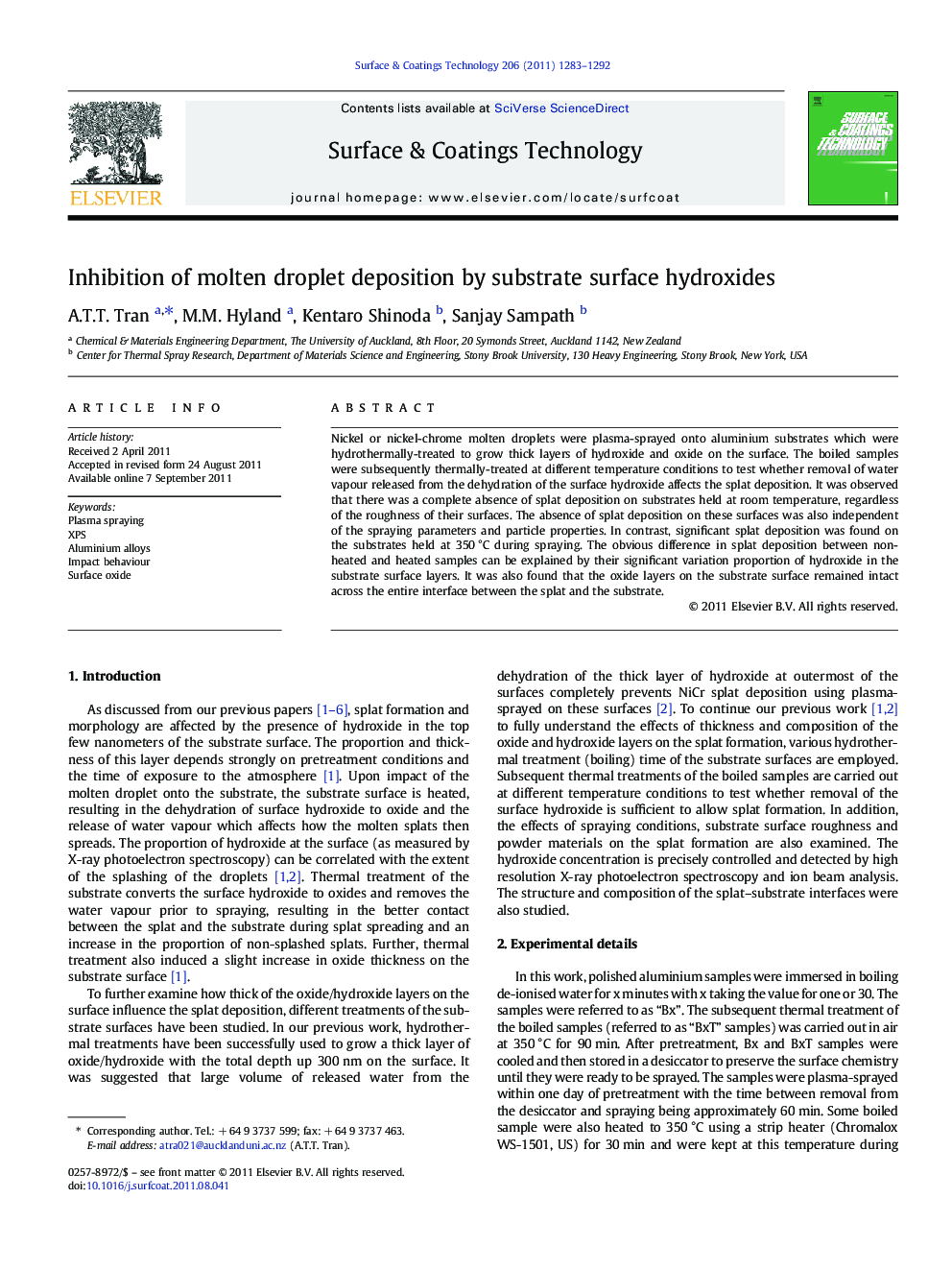| Article ID | Journal | Published Year | Pages | File Type |
|---|---|---|---|---|
| 1658726 | Surface and Coatings Technology | 2011 | 10 Pages |
Nickel or nickel-chrome molten droplets were plasma-sprayed onto aluminium substrates which were hydrothermally-treated to grow thick layers of hydroxide and oxide on the surface. The boiled samples were subsequently thermally-treated at different temperature conditions to test whether removal of water vapour released from the dehydration of the surface hydroxide affects the splat deposition. It was observed that there was a complete absence of splat deposition on substrates held at room temperature, regardless of the roughness of their surfaces. The absence of splat deposition on these surfaces was also independent of the spraying parameters and particle properties. In contrast, significant splat deposition was found on the substrates held at 350 °C during spraying. The obvious difference in splat deposition between non-heated and heated samples can be explained by their significant variation proportion of hydroxide in the substrate surface layers. It was also found that the oxide layers on the substrate surface remained intact across the entire interface between the splat and the substrate.
► Effect of gas release from the surface hydroxide on the splat deposition is studied. ► Gas released prevents splat deposition on the surfaces at room temperature. ► Prior removal of the surface hydroxide by thermal treatment allows splat adhesion. ► The surface oxide layer remains intact across the entire splat-substrate interface.
